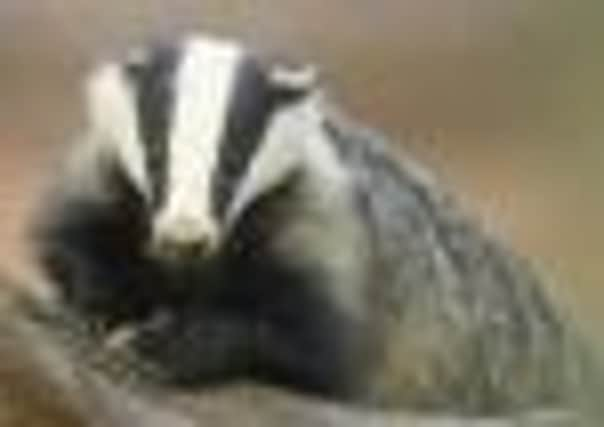Study finds link that spreads bovine TB


A study published this week of bacterial DNA has provided the first clear evidence that tuberculosis (TB) can spread between cattle and badgers living near farms.
Scientists mapped the genetic blueprints, or genomes, of bacteria isolated from 26 cows and four badgers during outbreaks of bovine TB in Northern Ireland.
Advertisement
Hide AdAdvertisement
Hide AdThe analysis made it possible to trace changes in the bacteria’s DNA as it passed from animal to animal.
It revealed that bacteria taken from badgers and cows were closely related at the farm level.
Bacterial strains obtained from badgers and nearby cattle farms were often indistinguishable.
The findings, published in the online journal Public Library of Science Pathogens, shed no light on the direction of transmission – whether from badgers to cows or cows to badgers.
Advertisement
Hide AdAdvertisement
Hide AdIt will come as a welcome piece of news to the Government, whose cull policy has met with stern opposition from animal rights activists who have sought to discredit the science behind it.
The cull has withstood appeals in both the High Court and Court of Appeals but its opponents have continued to press for it to be scrapped.
The RSPCA and Queen guitarist Brian May have been among those against the policy, arguing that a cull would be ineffective and inhumane. An e-petition urging the Government to abandon the plan has collected more than 160,000 signatures.
The Government’s case is that the vaccine alternative is only 50 per cent to 60 per cent effective.
Advertisement
Hide AdAdvertisement
Hide AdA nine-year trial showed that culling could slow the spread of the disease, but only if more than 70 per cent of badgers in an area were eradicated.
Lead scientist Professor Rowland Kao, from the University of Glasgow, said: “This study provides the first direct evidence of the close relationship between tuberculosis infections in cows and local badgers, at a very local scale.
“However, only with a larger study might we be able to quantify the extent and direction of transmission between cattle and badgers and reliably inform disease control policies.”
Bacteria from within single outbreaks were usually closely related, the study showed. But different herd outbreaks were usually characterised by genetically distinct groups of bacteria.
Advertisement
Hide AdAdvertisement
Hide AdControversial Government plans for a mass badger cull in England to curb the spread of bovine TB have been postponed until next summer.
Under the coalition plans, several thousand badgers were to be shot in Gloucestershire and west Somerset.
The disease itself has been catastrophic for the industry, leading to million-pound losses for the beef sector every year and forcing dozens of farmers out of business.